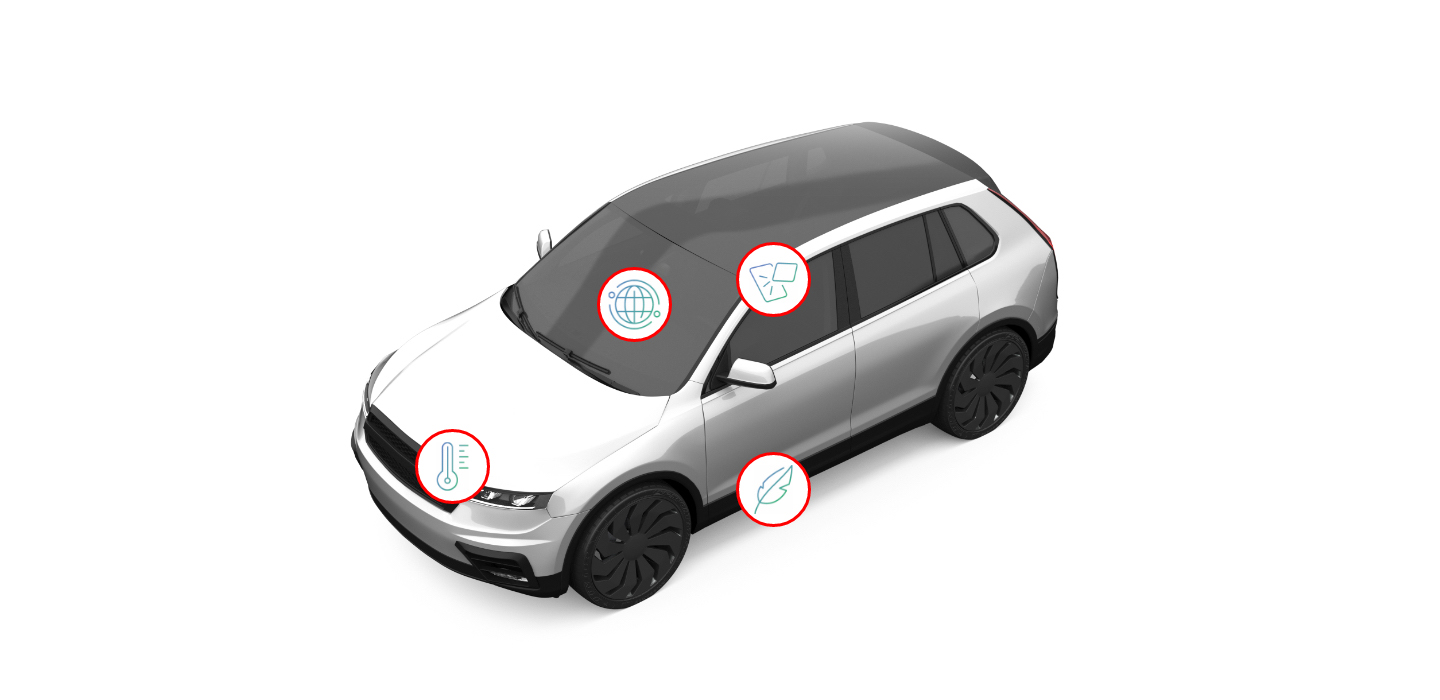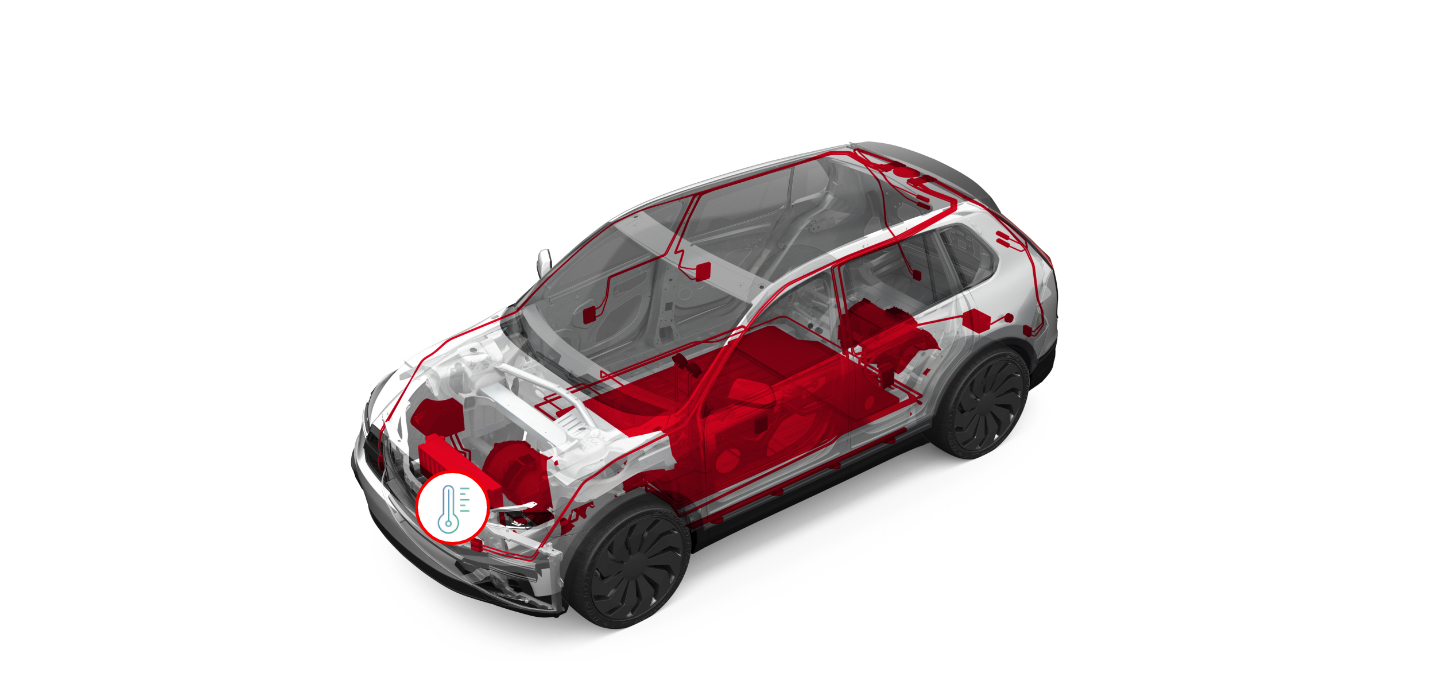
The car of the future will be electronic, autonomous, shared and connected.

10%
A 10% reduction in vehicle weight can result in a 6-8% fuel economy improvement.
Lightweighting
Replacing metal components with lighter materials will reduce fuel consumption and increase driving range –which are essential for hybrid and electric vehicles

25°C
Long-range, fast-charging batteries require an optimum temperature of 25°C both during driving and charging
Thermal management and safety
High-energy batteries and e-motors that support more powerful vehicles, longer driving ranges, and faster charging require very precise and consistent thermal

Connectivity, sensing and control
The industry needs accurate, upgradeable and reliable data systems and electromechanical actuators to support electrification and, ultimately, fully autonomous driving.
IoT technologies in hybrid and electric vehicles enable Advanced Driver-Assistance Systems (ADAS), navigation & telematics solutions, predictive maintenance solutions, Vehicle-to-Vehicle applications for autonomous safety, Vehicle to Infrastructure (V2I) applications for convenient charging, and Vehicle to Everything (V2X) communication applications for much more.

Noise, Vibration and Harshness (NVH) and durability
Hybrid and electric vehicles have quieter running engines, so further insulation against road noise is essential. Autonomous vehicles will double as work and social environments – meaning NVH performance will be crucial to preserving a positive vehicle experience.
We manage NVH using three basic strategies – reducing it at the source, isolating it from the car’s main structure, and absorbing as much as possible before it enters the cabin
In 2019, DuPont and Renault Sport Racing announced a multi-year strategic technical partnership focused on innovating and validating new technology and hybrid electric powertrain solutions to help advance Formula 1 vehicle performance. As the automotive industry moves towards new mobility solutions, Renault and DuPont will work together to develop and fast-track innovative solutions and critical technologies to production cars that will benefit consumers.

Other AHEAD™ customer collaborations
- DuPont collaborated with Audi to develop a bonding material that supports super-fast charging for the Audi e-tron, Audi’s first all-electric SUV. The BETAFORCE™ 2800 TC solution delivered a range of more than 400 kilometers, helping to free drivers from “range anxiety”.
- When Volvo’s electric performance brand, Polestar,needed a composite bonding adhesive to reduce vehicle weight as well as noise and protect against corrosion, they turned to DuPont. Our BETAFORCE™ 9050L composite bonding adhesive enabled a lightweight, durable body structure for Polestar 1.
- e-motor market, Hyundai has adopted “new bobbin technology” with DuPont™ Nomex® as the main insulation in its new Sonata HEV e-motor – enabling a more compact e-motor.

